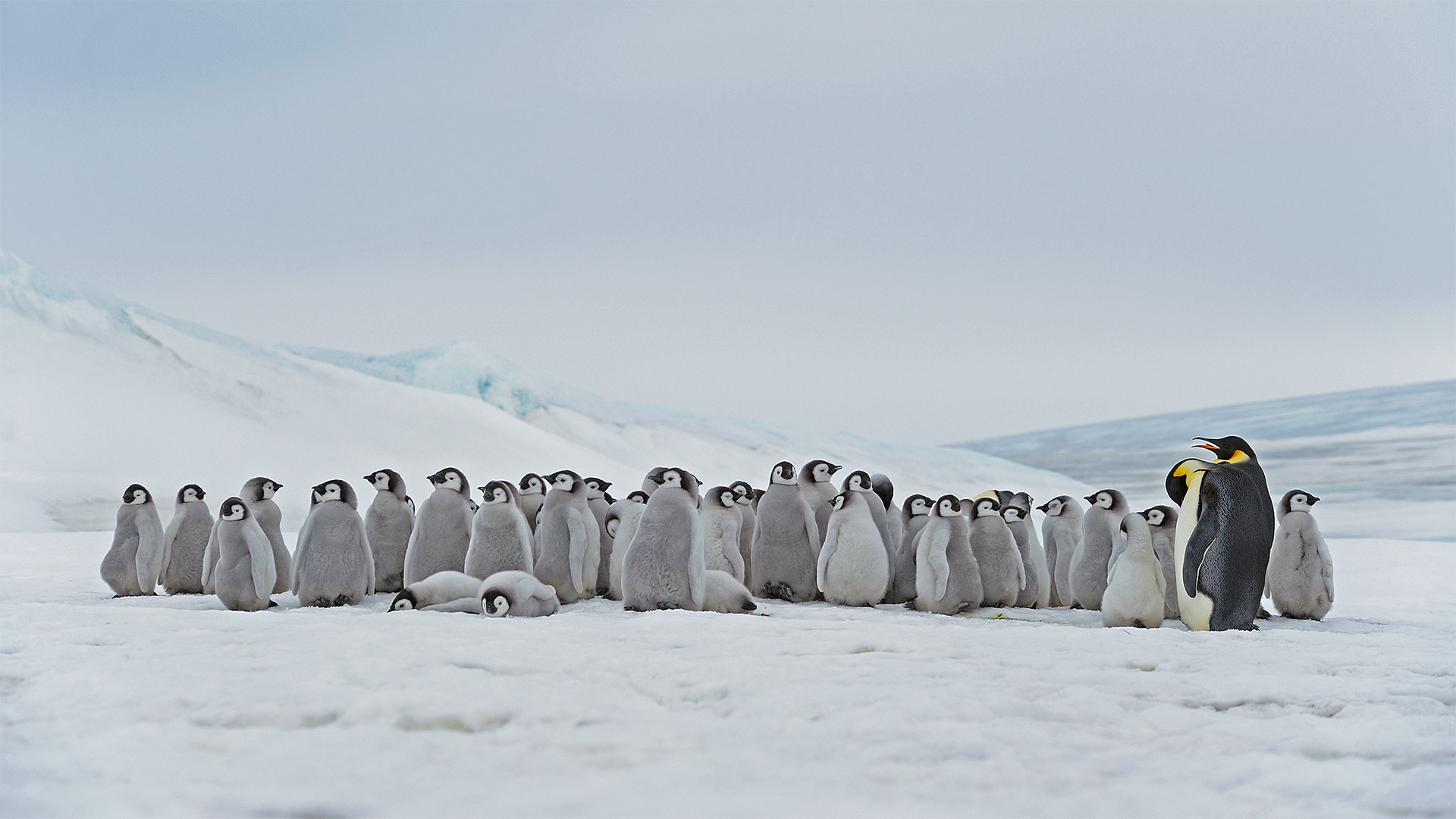栖息在斯诺希尔岛的成年帝企鹅和幼崽,南极 Emperor penguin adults and chicks at the Snow Hill Island rookery, Antarctica (© Martin Ruegner/Getty Images)

栖息在斯诺希尔岛的成年帝企鹅和幼崽,南极 Emperor penguin adults and chicks at the Snow Hill Island rookery, Antarctica (© Martin Ruegner/Getty Images)
Hey, you two in the front!
For World Teachers' Day, we're taking you to a class of emperor penguin chicks getting a lesson from a couple of wise adults—at least that's how it looks to us. All kidding aside, the celebration has a special significance this year. Educators dedicate their lives to engaging the minds of young and old alike, all the while sparking curiosity about the world around us. But with in-person classes widely curtailed due to the coronavirus pandemic, teachers have had to adapt their instruction methods, including the implementation of remote learning. More than ever we're grateful for their efforts, including their support to parents who are contributing at home.
Speaking of remote learning, the penguins in this photo live and learn in Antarctica at their breeding colony on Snow Hill Island. One thing we've learned on this World Teachers' Day: A group of chicks is called a rookery, but when mature, they become a waddle of adult penguins, a term that also describes their graceless walking gait. About that gait: Penguins rock side-to-side to raise their center of gravity and compensate for their wide feet and squat legs. You might think they expend a lot of energy getting around, but the percentage of energy retained per penguin stride—or recovery rate—is 80%. In comparison, the recovery rate for humans is a mere 65% (the two penguin chicks snoozing in today's photo probably already know that).
评论已关闭